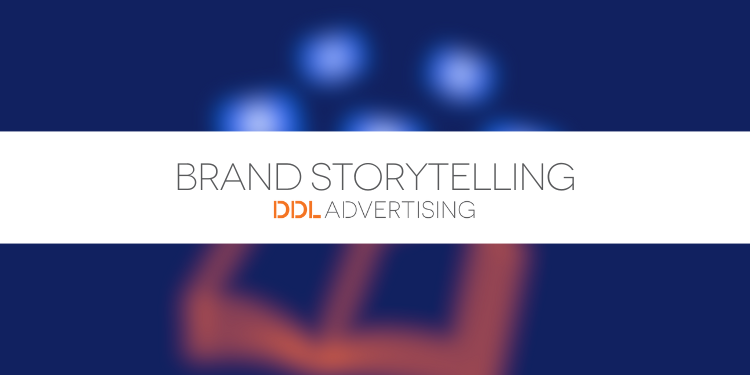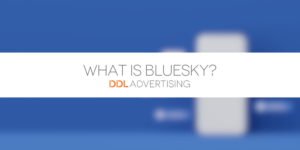

Introduction
In today’s crowded marketplace, having an outstanding product or service isn’t enough. Consumers don’t just buy what you sell—they invest in why you sell it. This is where brand storytelling becomes a game-changer.
A compelling brand story humanizes your brand, fosters deep emotional connections, and sets you apart from competitors. In fact, 70% of consumers say brand storytelling increases their loyalty to a brand.
This guide will cover:
✅ What brand storytelling is and why it matters
✅ How to craft a powerful and authentic brand story
✅ Strategies to emotionally engage your audience
✅ The impact of storytelling on customer loyalty and sales
✅ Successful brand storytelling examples
By the end, you’ll have a clear roadmap to develop a narrative that captivates and converts.
Importance of Brand Storytelling
Why is brand storytelling essential?
Storytelling is a powerful marketing tool that goes beyond traditional advertising. Here’s why it’s crucial:
- Creates emotional connections: 63% of consumers prefer buying from brands that share relatable stories.
- Differentiates your brand: Your competitors may offer similar products, but they don’t have your unique journey.
- Boosts engagement and loyalty: Brands using narrative-driven content see a 28% higher engagement rate than those that don’t.
Drives purchasing decisions: Studies show that storytelling in marketing can boost sales by 23%.
The Science Behind Storytelling & Consumer Behavior
Psychologically, stories activate the brain’s emotional centers, making brand messages more memorable and persuasive. Research shows that people remember stories 22 times more than facts alone.
Brands that incorporate storytelling into their marketing can:
✅ Influence buying behavior
✅ Improve brand recall
✅ Encourage word-of-mouth marketing
Elements of a Compelling Brand Story
Every compelling brand story contains these essential elements:
- Authenticity – Consumers value transparency. Your story must be genuine and aligned with your brand’s mission.
- Relatable Protagonist – The main character can be your founder, customer, or brand itself.
- Conflict & Resolution – Great stories include struggles, challenges, and victories.
- Emotional Connection – A strong emotional appeal makes stories more impactful.
- Clear Message – Your story should reinforce your brand’s core values and mission.
Fact: 65% of marketers say storytelling is essential for an effective content strategy.
Identifying Your Brand’s Core Values
Your brand’s story should be built around core values that define your identity and purpose.
Ask yourself:
✔️ Why does my brand exist beyond making money?
✔️ What impact do I want to make?
✔️ What values drive my business?
✅ Example: Nike’s brand storytelling revolves around inspiration and perseverance. Their slogan “Just Do It” is more than a tagline—it’s a motivational message that deeply resonates with athletes.
Crafting Your Brand Narrative
Your brand narrative should flow naturally and create an emotional impact. Follow these steps to craft your story:
Step 1: Define Your Brand’s Origin Story
Your brand narrative should flow naturally and create an emotional impa
Your origin story helps consumers connect with your journey.
💡 Example: Airbnb started when two roommates rented out an air mattress in their apartment. From a small idea, they built a global community centered around belonging.
ct. Follow these steps to craft your story:
Step 2: Make Your Customers the Hero
Your story isn’t just about you—it’s about how you transform your customers’ lives.
💡 Example: Apple’s storytelling isn’t about selling tech; it’s about empowering creativity with their slogan “Think Different”.
Step 3: Show, Don’t Just Tell
Authenticity matters in brand storytelling. Instead of saying, “We care about sustainability,” prove it through actions:
- Customer testimonials
- Behind-the-scenes content
- Real stories of impact
💡 Example: Patagonia proves its commitment to sustainability by donating 1% of profits to environmental causes and repairing old gear instead of pushing new purchases.
Utilizing Different Mediums for Storytelling
Your brand story should be woven into everything you do:
🎥 Video storytelling – Behind-the-scenes footage, brand documentaries
📱 Social media – Customer stories, employee highlights
📧 Email marketing – Personalized storytelling campaigns
📝 Blog content – Deep dives into your brand values
Engaging Your Audience Emotionally
Emotions are a driving force behind customer decisions. Here’s how to evoke them:
✔️ Use relatable challenges – Show struggles your audience can connect with
✔️ Incorporate human experiences – Highlight real stories of transformation
✔️ Use visual storytelling – Videos and images enhance emotional impact
Fact: Brands using visual storytelling increase engagement by 80% compared to text-only content.
Measuring the Impact of Brand Stories
To measure brand storytelling success, track these key metrics:
📊 Engagement Rates – Monitor likes, shares, and comments
📈 Website Analytics – Track time spent on brand story pages
💰 Conversion Rates – Measure sales growth linked to storytelling campaigns
🎯 Customer Loyalty – Use surveys to gauge emotional connection
💡 Example: After implementing storytelling, a beauty brand increased its engagement by 40% and saw a 15% boost in sales.
Case Studies of Successful Brand Storytelling
📌 Coca-Cola – Uses storytelling to spread happiness through campaigns like “Share a Coke.”
📌 TOMS Shoes – Built its brand story around giving back, donating shoes with each purchase.
📌 Dove – Their “Real Beauty” campaign promotes self-confidence and challenges beauty standards.
Fact: 63% of consumers prefer brands with meaningful storytelling.
Common Mistakes to Avoid in Brand Storytelling
🚫 Being Inauthentic – Consumers see through forced narratives.
🚫 Focusing Too Much on Your Brand – Your audience should be the hero.
🚫 Lack of Consistency – Your brand story should be integrated across all platforms.
Future Trends in Brand Storytelling
📌 Immersive storytelling – AR & VR will create interactive brand experiences.
📌 Personalized storytelling – AI-driven content will allow customized brand stories.
📌 User-Generated Content (UGC) – Consumers will continue to co-create brand narratives.
Fact: 80% of consumers are more likely to engage with immersive brand experiences.
FAQs About Brand Storytelling
1. What is brand storytelling?
Brand storytelling is the strategic use of narratives to communicate a brand’s values, mission, and personality. It helps create emotional connections with consumers.
2. How does storytelling improve customer loyalty?
Authentic storytelling fosters emotional connections that encourage customers to remain loyal over time.
3. How can I measure the success of my brand story?
Track engagement rates, website traffic, conversion rates, and customer sentiment analysis.
4. What are some examples of great brand storytelling?
Nike’s “Just Do It,” Coca-Cola’s “Share a Coke,” and Dove’s “Real Beauty” campaign.
Final Thoughts: Your Brand Story is Your Superpower
A compelling brand story can transform casual customers into loyal brand advocates. Start by identifying your why, values, and unique journey, then share it authentically across different platforms.
💬 What’s your brand story? Share it in the comments or reach out for help crafting a powerful narrative!






